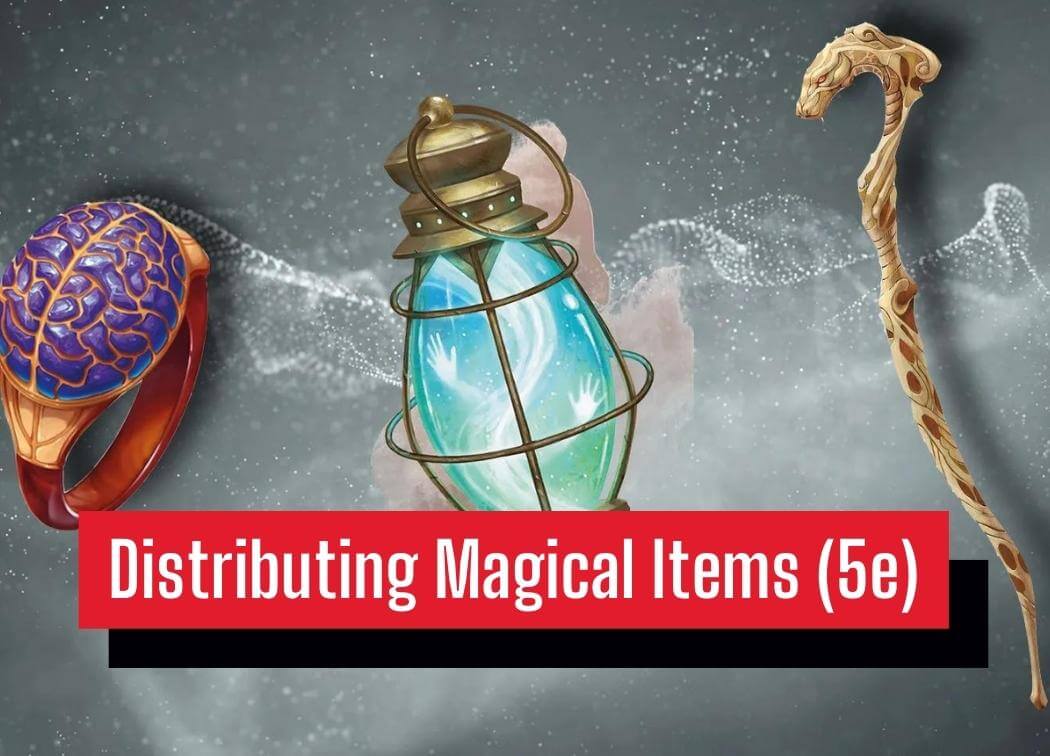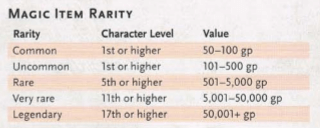Distributing Magical Items (5e)

My party of 9 players has almost reached level 4. Around level 5 is when most Rare magical items should become available to the party. I say “should” because there’s no true limit for when magical items can show up in 5e. The Dungeon Master’s Guide recommends that Rare items reserved until level 5 or higher.
Before 5e I primarily played D&D 3.5e. The major difference I’ve found between the two concerning magical items is that 3.5e distributes a ton more magical items. Players also get more powerful items earlier in 3.5e compared to 5e. For example, a +2 longsword given to a low-level character could break your game in 5e. In 3.5e it will be powerful, but not necessarily broken.
That discussion could be a topic of a different post. To showcase this a bit better granting a +2 to attack +2 to damage sword at a level 1-3 in 5e it is going to make a significant impact on the wielder’s damage dealing capabilities. Especially when early game monsters have 10-14 AC on average.
Magical weapons in 5e are usually more complex than just a simple +X to attack +X to damage. The system allows the DM to make a magical longsword Flame Tongue rather than just a +1 or +2 weapon.The attunement system balances these items since the player may only be attuned to 3 magical items at a time.
Magical Item Rarity
If you open up your Dungeon Master’s Guide and flip through the magical items section you’ll see a wide selection of items to pick and choose from. Notice that there is a rarity type listed for each item. There’s a chart that explains all of this at the beginning of this section.

The picture above is the official recommendation for 5e as to when any of these items should be given out to players. Generally, items of Rare or higher rarity so 5th-20th level items will require attunement to use them so players will have to keep this in mind.
Also note that magical items only go up to +3 quality in 5e whereas other editions you could see magical items as powerful as +5. For reference: Rare = +1, Very Rare = +2, and Legendary = +3. You will rarely be given just a +3 longsword. I love how creative the magical items are in this edition. If you’re homebrewing an item, keep it within those constraints. An item with a power level above Legendary will certainly be game-breaking.
A longsword such as Flame Tongue that I mentioned earlier is a Rare magical item. Flame Tongue deals an additional 2d6 Fire damage and sheds bright light in a 40ft radius. This provides both elemental damage at an early level and a light source for a character without darkvision.
It is a very powerful item. Clearly, an item of this power level should not be given out too soon into a campaign. The more powerful items you add to the game, the higher the CR the party will be able to comfortably defeat. 5e was not built with a low-level party of 4-5 characters decked out in high-level magical items in mind.
There is nothing wrong with throwing magical items earlier than recommended into a game if that is what your party likes or if you are in a high-magic setting, but for a standard game I would recommend that you take the magical item rarity table pretty seriously. This doesn’t mean you can’t give out any magical items though!
Giving Out Magical Items Pre 5th Level
Magical items are always a fun time for players. My players are also used to 3.5e. Naturally, they began to wonder why they hadn’t gotten any magical items around level 2 or 3. While I did explain to them how different the magical item system is in 5e, I felt that it might be a good idea to throw some less-powerful magical items at them for fun. That is what the Uncommon and Common magical items are for.
There are plenty of Common and Uncommon magical items that typically provide out of combat utility. The Common and Uncommon weapons and armor are fairly weak such as a simple +1 armor. Xanathar’s Guide to Everything has also added a lot more low-level Common magical items which provide flavor and utility in the early portion of the game.
The Alchemy Jug is an example of a magical item that is not a weapon or armor. My party has conjured oil, honey, and mayo to create difficult terrain. They’ve also conjured beer for role-playing purposes. It can create drinkable water for when they traverse the desert. The possibilities are endless when you give your party open-ended items such as the Alchemy Jug.
There are plenty of other unique utility items to choose from such as the bag of holding. Spell scrolls and potions are staples in my treasure hoards as well.
Conclusion
The decision of when to give your party magical items is up to you. A 5e campaign could be low magic or no magic and be perfectly balanced. Make sure whatever you do you balance the game accordingly. The more magical items you provide for the party, the more difficult you will have to scale the encounters to challenge them.
I’ve also written a post detailing how to find good sources for homebrew magical items. Xanathar’s Guide to Everything and the Dungeon Master’s Guide have tons of great items, but the homebrewing community is large and has tons of great items to give out to your players.
